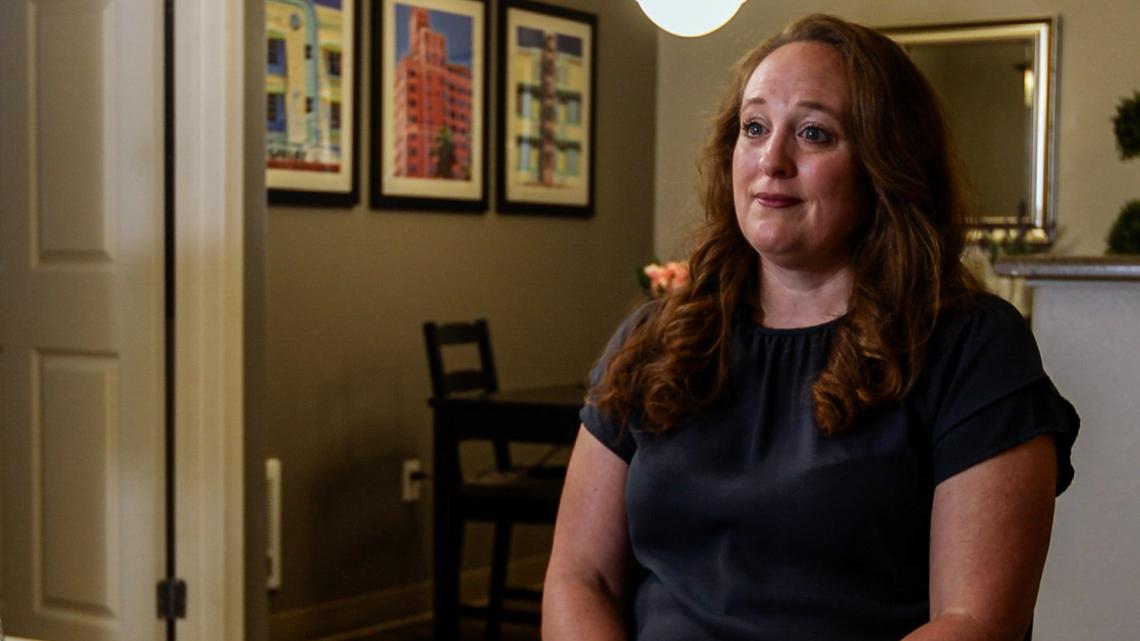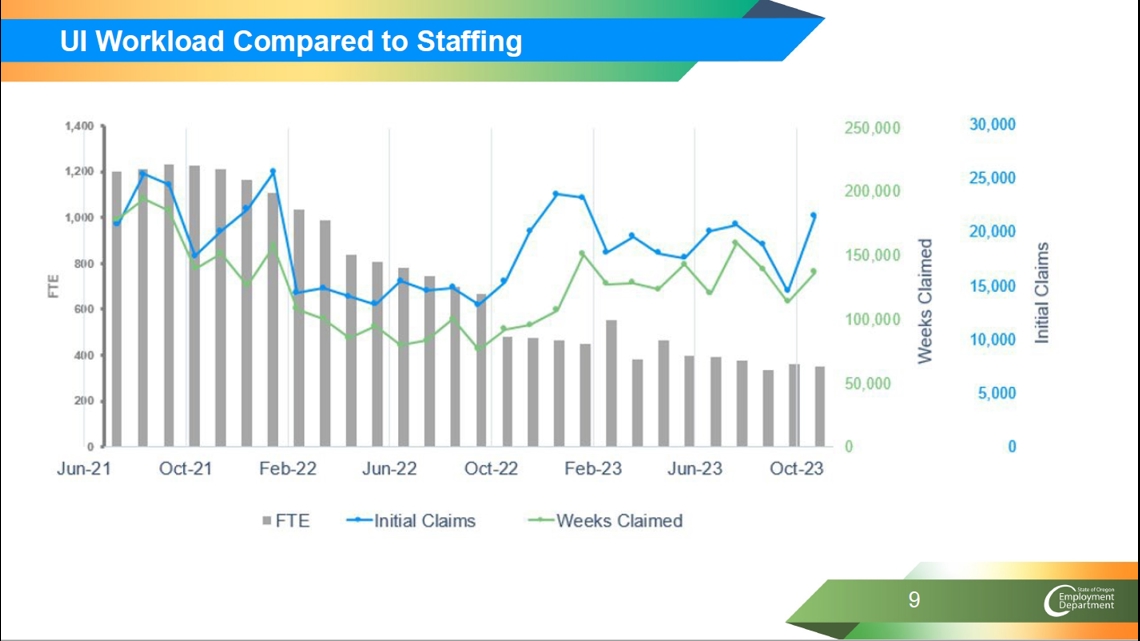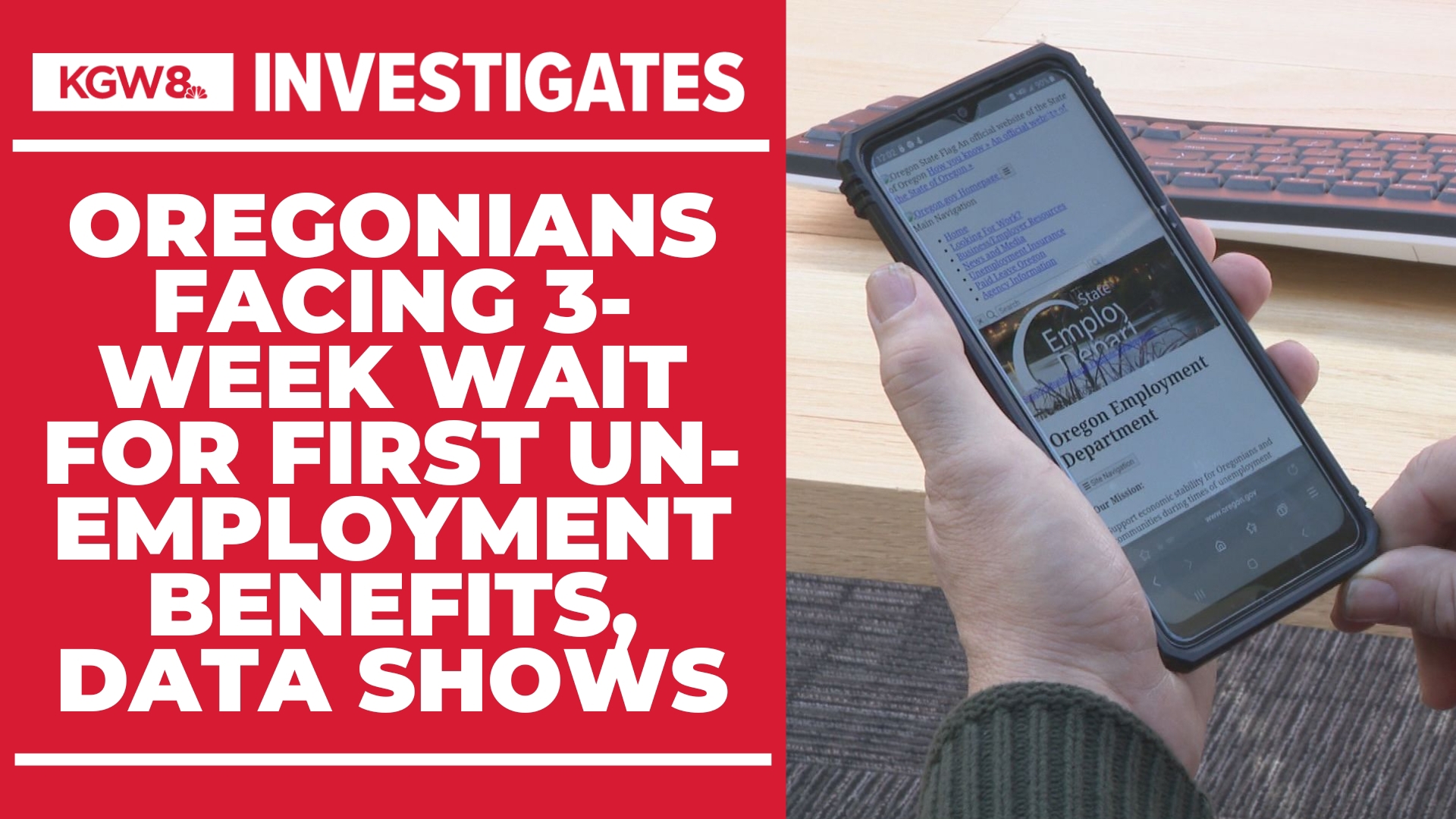PORTLAND, Ore. — New data shows a majority of unemployed Oregonians now have to wait more than three weeks to get their first jobless benefits from the state, the latest evidence of the state’s unemployment system struggles.
Only 40.6% of unemployed workers have received their benefits within three weeks since April 1, according to the Department of Labor.
That ranks Oregon as the third-worst state nationally at making timely unemployment insurance payments.
The Oregon Employment Department said short staffing and the processing of older claims may be affecting the data drop-off, although OED said it’s still analyzing and can’t definitively identify the cause.
“When you start to see the numbers go lower, it can either mean we’re falling behind or we’re getting caught up on a backlog," said David Gerstenfeld, OED Director, in response to a question about the data Thursday.
However, the worsening first-time payment data coincides with the state’s rollout of a new online unemployment system in March — which led to claimant complaints, longer wait times, reduced OED hours, and other issues distributing benefits.
"Every state that has gone live with a new system sees that temporary decrease in productivity," said Gerstenfeld.
Kathleen "Chiki" Nussbaumer, who was laid off from Wells Fargo earlier this year, said she's worried about others waiting for benefits.
“The state is putting a lot of people at risk,” said Nussbaumer. “I cannot be the only one this is affecting.”


Nussbaumer applied and started receiving state unemployment benefits in January, before the switch to the new Frances Online system.
Before the March 4 changeover, Nussbaumer took a vacation. Following the rules, she didn’t apply for benefits while not actively seeking work.
When she returned, Oregon had changed its system and Nussbaumer’s continuing claims were denied.
She waited more than three weeks for the issue to be resolved and to receive benefits again — roughly the minimum amount of time that most unemployed Oregonians are now waiting for their first-time payments.
“If this is happening to me it’s happening to people who don’t have money and savings, and if you’re already past due on your bills and rent, you can’t catch up if you live paycheck to paycheck,” she said. “That’s where it’s a big concern.”
In response to complaints and increased scrutiny over the system rollout and payment delays, OED cut its weekday phone hours to 9 a.m. to 4 p.m. OED staffers are also no longer taking calls on Mondays to try and catch up on claim issues and payment delays.
From June 9 to June 15, the average call wait time for OED was 56 minutes and 48 seconds.
For many of its issues, the department points to staffing challenges. Temporary pandemic-era staffers started leaving in 2022, and OED said the number of claims outpaced the staff left to handle them.
Oregon lawmakers approved funding for more OED staff earlier this year and the department plans to finish onboarding new staff within two months.
OED staffing dropped below 400 full-time workers in 2023 and OED plans to staff 476 people by August.


Still, staffing alone doesn’t fully explain the first-time payment struggles.
The national standard for first-time payments within three weeks is 87%. After recording first-time payment rates around 90% for much of 2022 and early 2023, Oregon fell off the national standard starting in August 2023 — dropping to roughly 70% on average through March 2024.
The 40.6% rate since April is evidence of a larger problem.
Only Washington, D.C., Alabama and Colorado recorded worse payment timeliness in the same 3-month stretch — although the quarterly data is not finalized until June 30, per DOL standards.
“Someone needs to be held accountable for this,” said Nussbaumer. “The system is broken in my opinion.”
Gerstenfeld said the federal metrics aren't always the best way to judge performance, and that even if OED continues to gain ground and make progress on outstanding claims, that could "look like late work being done" in federal data.
Instead, Gerstenfeld said OED is focused on reducing the number of unemployment claim issues that are older than six weeks.
He said OED tracked about 13,500 issues in that category before it changed its phone hours on June 3, staff members have resolved thousands of issues, and there are now 10,200 issues that are older than six weeks.
Among those claims with issues, Gerstenfeld said a smaller proportion — about 3,200 claims — have issues that are actually holding up weeks of benefit payments for longer than three weeks.
"The extra time is allowing us to resolve the very issues people are calling about," Gerstenfeld said.
Frances Online is the same platform that Oregon debuted in 2023 for Paid Leave Oregon — a rollout that encountered problems as well.
Nussbaumer had issues getting money through Paid Leave Oregon at first, though she attributed that to the initiation of an unfamiliar system. She assumed things would be smoother in the unemployment system rollout.
“I would think that they would learn from the Paid Leave Oregon (experience),” she said.
OED officials said the Frances Online system is a much-needed upgrade, providing more detailed claim status, customization, easier access to information, and increased staff productivity.
Still, state lawmakers have been frustrated with the rollout — holding "accountability hearings" for the department in May. Another hearing is set for September.

